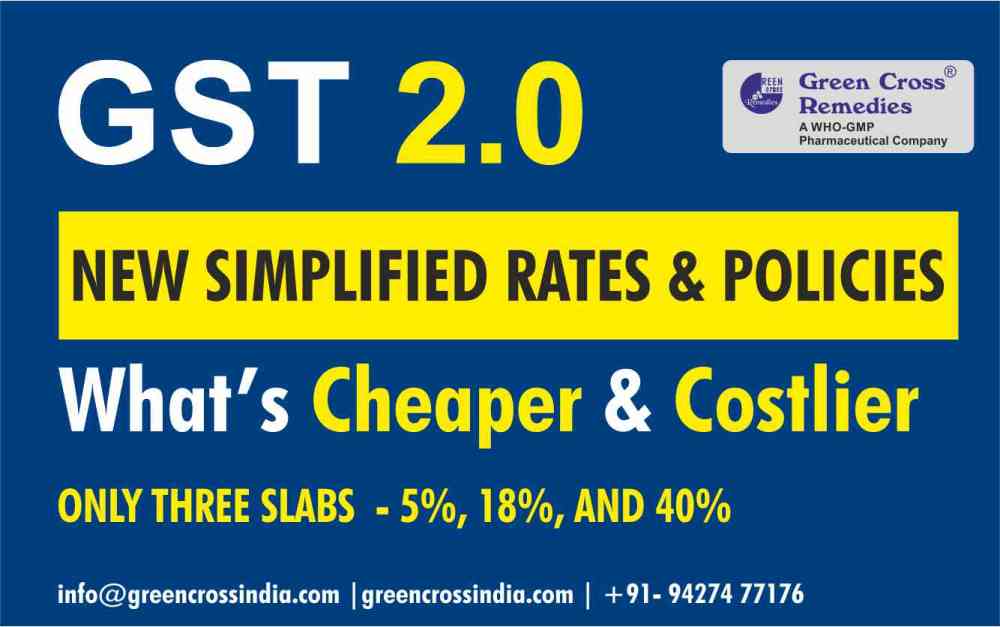GST 2.0 Guide: New Rates & Complete Information.

GST 2.0 Guide: New Rates & Complete Information
India's most significant tax overhaul since 2017
India's Tax Revolution Enters a New Phase
India's GST 2.0: New Simplified Rates, What's Cheaper & Costlier from 2025- India's tax landscape is on the verge of a historic transformation. The GST Council has approved a sweeping reform bill—dubbed GST 2.0—scheduled to go live on September 22, 2025, perfectly timed with the festive season. This represents the most significant update to the indirect tax system since its original launch in 2017.
Why This Major Shift?
GST 2.0 Guide: New Rates & Complete Information AS - The initial multi-tier framework of 5%, 12%, 18%, and 28% proved challenging to navigate. Companies frequently faced confusion over product categorization, and end-users saw inconsistent pricing on similar goods. Experts long advocated for a more streamlined and transparent regime.
New GST Structure: Simplified & Rationalized
| Old Tax Structure | New Tax Structure |
|---|---|
| 5%, 12%, 18%, 28% | 5% (Essential items), 18% (Standard goods & services), 40% (Premium & sin goods) |
Benefits of the Simplified System
- Businesses: Benefit from more straightforward invoicing, a drastic reduction in classification arguments, and smoother overall compliance.
- Consumers: Gain clarity on product pricing and the assurance that basic necessities are not subject to disproportionately high taxes.
- The Government: Maintains fiscal stability by offering relief on essentials while generating revenue from luxury and non-essential products.
What Becomes More Affordable Under GST 2.0?
A central goal of GST 2.0 is putting money back into the pockets of consumers. A wide range of everyday and aspirational products will see lower taxes, effectively reducing their retail prices from September 22, 2025.
Key categories include:
- Groceries & Household Goods: Many packaged foods, soaps, and juices move to the 5% slab
- Healthcare & Wellness: Essential medicines and insurance premiums become more accessible
- Home Appliances: Refrigerators, washing machines, and air conditioners shift to 18%
- Transport & Mobility: Small cars, motorcycles, and electric vehicle parts expected at 18%
Detailed Overview of Revised GST Rates
| Category | Item | Previous Rate | New Rate |
|---|---|---|---|
| Daily Essentials | |||
| Hair Oil, Shampoo, Toothpaste, Soap | 18% | 5% | |
| Butter, Ghee, Cheese | 12% | 5% | |
| Healthcare | |||
| Health & Life Insurance Premiums | 18% | Nil | |
What Will See a Price Increase?
To balance the relief offered, a new top tier of 40% has been introduced for "sin" and ultra-luxury items.
- Sugar-sweetened beverages: Aerated drinks and high-sugar energy drinks
- Luxury vehicles: High-capacity SUVs, imported luxury cars
Economic Impact of GST 2.0
The impact of this reform extends far beyond price tags. Economists project it could reduce inflation by over 1 percentage point, as lower taxes on a wide basket of goods help cool overall price levels.
Winners of GST Reform
- The Average Household saving on daily essentials and large purchases
- FMCG and Auto Sectors poised for a surge in demand
- Healthcare and Insurance Providers as services become more affordable
Those Facing Challenges
- Luxury Automakers and sellers of high-end goods
- Manufacturers of sugary beverages facing dampened demand
Conclusion: A Streamlined Future for Indian Taxpayers
The implementation of GST 2.0 on September 22, 2025, is a pivotal moment. By moving to a simpler three-slab system, the government is tackling the core issue of complexity that plagued the first version of GST.
For you, the consumer, it means tangible savings on everyday life. For businesses, it means less time on compliance and more on core operations. For the nation, it signals a mature, confident, and growth-oriented economic policy designed to benefit the many.
Disclaimer: This content is for general informational purposes only. It does not constitute professional advice, an offer, or a solicitation. The information is subject to change without notice and is not intended to create any legal rights or obligations. We assume no liability for any actions taken based on this information. Readers are advised to consult with a qualified professional for specific advice.